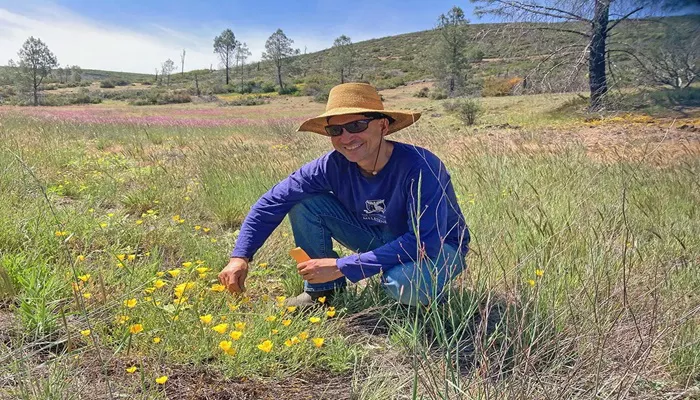California Poppies Illuminate the Path to Plant Adaptation.
The vibrant orange blooms of California poppies brighten meadows across the Golden State, showcasing their remarkable adaptability. From the hot, arid environment of San Diego to the cooler, rainier Klamath Mountains, this species demonstrates a unique ability to thrive in diverse conditions.
As climate change accelerates, the capacity for species to adapt becomes increasingly crucial. However, many current models for predicting plant distribution assume species can only survive in their existing climate range. This perspective overlooks the potential for species to adapt beyond their current conditions.
“An individual plant is unlikely to thrive across the entire climate spectrum where its species is found,” says UC San Diego Professor Elsa Cleland. This suggests that while a poppy from wetter Northern California may struggle in drier Southern California regions, they are still classified under the same species.
To improve plant distribution models, researchers are studying California poppies within the UC Natural Reserve System. Cleland, along with UC Merced Professor Jason Sexton, will analyze genetic diversity using seeds from various wild populations and track these populations in their natural habitats. This research aims to reveal how genetic diversity and gene flow influence plant survival. University of Connecticut Professor Cory Merow will then incorporate these findings into an advanced model that considers adaptation and survival. This updated model will enhance plant conservation efforts and help native species endure the environmental challenges of the 21st century.
“We aim to predict how species will adapt to climate change by examining existing variation across their ranges,” Cleland explains.
Adaptation Across Climates
California poppies excel in adapting to different climates. In Southern California, where clouds dissipate early, poppies complete their reproductive cycles quickly. These southern poppies are usually annuals, with less emphasis on root growth and seeds that can remain dormant for years. In contrast, Northern California poppies are often perennials with deep roots and seeds that germinate in the next rainy season.
These variations, driven by genetic differences, affect adaptation strategies. Researchers will investigate how these genetic variations influence plant success and adaptation.
“We believe that much of the genetic variation necessary for adaptation is distributed across populations rather than within them,” Cleland says. “As genes flow between populations, different ecological strategies merge.”
Genetic Variation and Survival
Genetic variation within a population is essential for adapting to climate change. Just as a poker hand determines the outcome of a game, the genetic pool available to a population influences its ability to cope with new conditions.
Statistician and biologist Ronald Fisher’s 1930s theorem suggests that a more genetically diverse but less optimized population is better equipped to adapt than a less diverse population that is already well-suited to its current environment. A diverse population acts like a multi-tool, offering a range of capabilities compared to a specialized tool.
Field Research and Analysis
Cleland and Sexton’s study involves collecting poppy seeds from 20 locations across California, including UC Natural Reserves, state parks, and other protected areas. These locations provide a broad spectrum of environments for studying adaptation.
The researchers will grow the seeds in a greenhouse, crossbreed plants within each population, and then plant the seeds at UC San Diego and UC Merced. This setup will test how well the seeds perform in different climates and simulate how enhanced gene flow might influence adaptation.
“We will examine how different types of gene flow—short versus long distances and various climate conditions—affect offspring,” Sexton says.
Predicting Population Success
Alongside the experimental populations, Cleland and Sexton will monitor wild poppy populations over four years, tracking survival and reproductive success. This data will help develop an integral projection model (IPM), a tool for predicting plant survival.
“Integral projection models can assess how well a population is likely to persist under different scenarios, indicating which populations are thriving or declining,” Cleland explains.
This model could be applied to other plant species facing climate-induced range shifts and extinctions, providing a framework for preserving genetic diversity in a rapidly changing world.
Conservation Insights
The study will also offer insights into effective plant conservation strategies. Results will help determine whether introducing genes from nearby or distant populations is more beneficial for enhancing adaptive capacity.
“Conserving genetic diversity means protecting not just one large population but also smaller, local populations across a range of environments,” Cleland notes.
The California poppy research underscores the importance of understanding genetic variation and adaptation to safeguard species in the face of environmental change. “We are just beginning to grasp how genetic variation across species ranges can aid adaptation,” Sexton adds.


